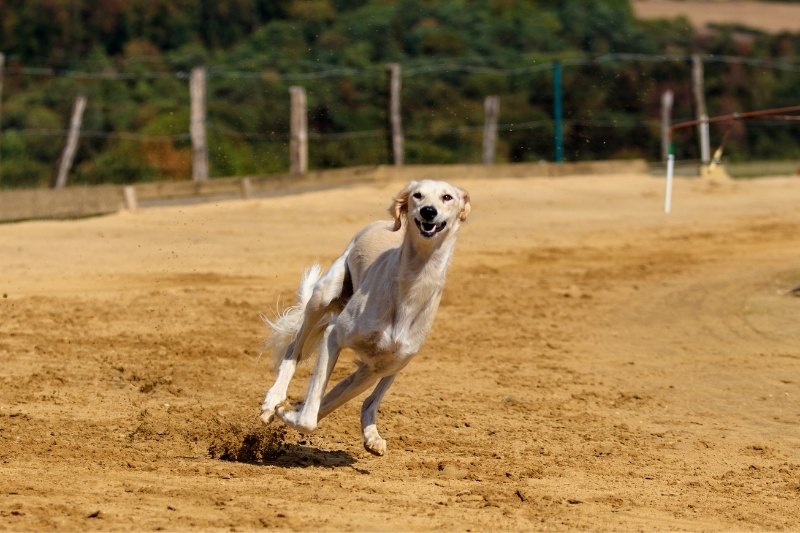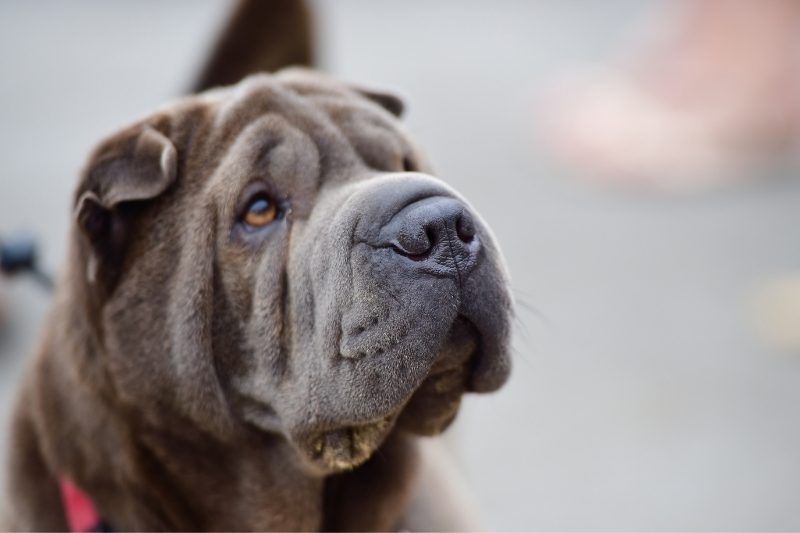5 Rottweiler Colors and Patterns (With Pictures!)

If you're looking for a courageous and protective dog, then you can't go wrong with a purebred Rottweiler. Being around since Roman times and originally coming from Germany, they're now one of the world's top 10 dogs to own.
If you're a sports person, they're a great breed to have by your side. Initially, these cool canines were kept to herd cattle, and today still display that strong athletic trait. They're the perfect dog for agility, running, and endurance-based sports!
But did you know their appearance is just as great as their personality? There are quite a few Rottweiler coat colors to choose from.
Let's check them out!
The Ideal Rottweiler Owner
Before jumping right into learning about all the Rottweiler colors, let's see if you'd be the perfect fit for them as an owner. This dog breed is a great fit if you've owned a dog previously and have some experience handling them.
The Rottweiler has a strong and assertive personality due to their working nature. Therefore they're best fitted with owners who can handle their strong personalities. Rottweilers are a large breed and require a lot of exercise and socialization to stay disciplined.
Therefore they need an owner who can give them around 2 hours a day of exercise and ample space to stretch their legs. For this reason, they need a home with a garden or backyard to run around in.
Plus, because they were a former working breed, they need to feel like they have a job to do to stay happy. So, if you're unable to meet these requirements, there's a high chance they could become self-destructive.
To save you from worrying about their double coat shedding, you should bathe a Rottweiler every 2-8 weeks. Brushing them once a week will also go a long way to keeping their coat intact and skin healthy.
Rottweiler Colors According To The Kennel Clubs
AKC
According to the American Kennel Club, there are three recognized colors, which are:
- Black & Tan
- Black & Rust
- Black & Mahogany
UKC
The UKC mentions that the Rottweiler's undercoat must be black, tan, or grey. In addition to this, they must have visible rich tan markings on their legs, eyes, muzzle, cheeks, chest, and below the tail. They don't accept the following:
- Straw-colored markings
- Albinism
- White markings
- Colors other than black and tan.
FCI
According to the FCI, the Rottweiler's coat must be black. It must have visible markings of tan on its chest and legs, throat, cheeks, muzzle, under the tail base, and over its eyes.
Official Rottweiler Colors According to the American Kennel Club
Just like many Kennel clubs, Rottweiler colors are well-defined. Compared to some breeds, like the Miniature Schnauzer, there are not as many to go through. For the Rottweiler breed standard, there are only three main ones, which are:
Black & Mahogany Rottweiler

The black and mahogany Rottweiler is the first color that comes to your mind when you envision this breed. Compared to all the other types, you'll find the darkest mahogany markings on this coat.
Black & Rust Rottweiler

Second to the mahogany coat is the black and rust Rottweiler. With a rust color slightly like a Doberman's. Yet, it can be difficult for many to detect the difference between mahogany and rust in these two coat colors. The main difference is that the rust color is lighter and not as rich.
Black & Tan Rottweiler

A third coat color but not as popular as the last two is the black and tan Rottweiler. Rottweiler puppies tend to have the same colors as Beaucerons, which can sometimes confuse owners. This coat has a light cool undertone and lighter markings than the other two AKC-approved coats.
Other Rottweiler Colors and Patterns
These dog breeds have many more beautiful colors than just ones recognized by the Kennel Clubs. Rottweilers are known to come in the following:
Red Rottweiler

Often coming from crossbreeding, Red Rottweilers tend to be much rarer and more intriguing. If you see one, it's highly unlikely this dog has been bred ethically and is being sold for a higher price just for their coat color. Breeding practices like this can make these dogs subject to many health problems.
Blue Rottweiler

If you see a blue Rottweiler, it's important to know no dog is truly blue, but rather gray with shades of blue.
Sometimes, when you have blue breeds, health problems are associated with them, like Follicular Dysplasia and alopecia due to bad hair quality. Blue Rottweiler puppies often have bad hair quality as they get older, becoming patchy and having dry skin.
Rottweiler Markings and Patterns
The most common type of pattern you'll see on these guard dogs is a saddle pattern. Just like the name suggests, it will look like they have a saddle across their back, similar to a horse. Most of the time, this dog's body color base will be black, and the other body parts will be lighter, especially on its paws, face, and belly.
Alongside this, purebred Rottweilers will often have markings ranging from:
- Chest: Often high up near the neck, there should be two triangle marks on both sides of the chest.
- Dots on eyes: Another distinct feature of markings is having dots on both eyes.
- Muzzle marks: The Rottweiler often has a stripe on each side of their muzzle. Each stripe will be of a different color. If it touches the bridge of their nose, they won't be allowed for competitions.
- Legs: There will also be marks on their front and rear legs. Marks tend to be on their inner thighs on the back legs, and on the front, there will marks near their paws.
- Tail tone: Sometimes, Rottweilers will have black on top of their tail. Slight towards the bottom, the shade of black will change.
Note: If you plan on entering them in competitions, they'll need to have all spots and markings. They won't qualify for the competition if they don't have them.
Frequently Asked Questions
What Is the Most Common Rottweiler Color?
The most popular color you'll find is the black and mahogany Rottweilers. Out of all the coat color combinations you see, these are the darkest.
What Is The Rarest Rottweiler Color?
Out of all the coat colors, the red Rottweiler is the rarest because they've been bred for unethical reasons. This breed does not have the typical saddle markings you'll find on a Rottweiler, and because of this, many people mistake them for another breed.
Do Rottweilers Change Color?
Sometimes Rottweilers are prone to changing color as they grow from a puppy to an adult. They often change color between seasons when their double coat sheds to prepare for colder weather. Sometimes, if a Rottweiler carries a dilute black gene or red gene, their true color may show once they age.
How Much Does a Rottweiler Cost?
The cost of a Rottweiler can vary between $600-$2500. It all depends on location, breeder's reputation, and the bloodlines of the Rottweiler.
Final Thoughts
Overall, there are three distinct Rottweiler colors, according to the American Kennel Club. Besides the ones listed, there are two further solid colors: blue and red. To be honest, there's no favorite of ours for Rottweiler coats; we think they're all beautiful.
When looking for a dog, you should not selectively pick based on their coat color alone. We suggest looking at their personality, exercise, and grooming requirements to see if they'd be a right fit for you.
In this situation, Rottweilers are best suited for those with a assertive personality. If you're someone who has time to dedicate to taking them to exercise for 2 hours a day, have ample space, and can handle their strength, then this breed will be well suited for you.
Would you own a Rottweiler? Let us know in the comments below.
I’m Charlotte, a content and copywriter from the North of England and currently living in Berlin. Animals have always been a huge part of my life, so writing about dogs is a total pleasure! I love all kinds of dogs and their cheeky personalities, but I’d have to say Weimaraners are my favourite!








